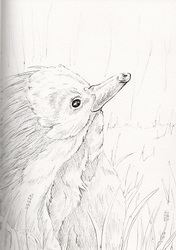Sign In
CloseTotem of the day is Mockingbird! Indulge in things that you are talented in and share it with those around you. This is a time to engage in excited singing, regardless of whether you are good or not. Be thoughtful about how you act for others will be paying attention to your actions over what you may say vocally. Actions speak louder than words, as the saying goes. At the same time, be aware of how others are speaking with you by paying attention to their body language and gestures. You may learn much more about yourself by how others react to you. The Mockingbird spirit guide is known for it's connection with song, language, mimicry, overcoming fears, and talents. Mockingbird can come as inspiration to engage and expand our talents. This is one of the ways that Mockingbird helps in growing confidence. Call on Mockingbird when learning new languages, in particular. This guide shows us how appearances aren't important. What you do in life is what is important. At times, this may include leaving behind those that have hurt you. Let Mockingbird help to show you the truth behind illusions and the lessons you can learn from every experience. Mockingbirds are present throughout many Native American tales. The Hopi and Pueblo tribes saw Mockingbird as the one who taught humans how to speak in the Creation tales. The Southeast Indian tribes saw mockingbird as a sign of intelligence while in Shasta Indian tales the Mockingbird guards the dead. People who connect with Mockingbird are often very protective of their home and family with a great sensitivity to other individuals around them. At times, this can either draw in friends or keep them a part. These individuals are often skilled mimics with a loud singing voice they enjoy letting free. While quieter and calmer on their own, they are known to become more open and happy around others.
Mockingbirds, belonging to the Mimidae family of birds, are omnivorous birds within the group of New World birds known for their ability to mimic the sounds of other birds, insects, and amphibians. There are over 30 species of Mockingbird that can be found throughout portions of South America, Galapagos islands, the West Indies, and various other Islands such as the Caicos, Turks, Cuba, and Jamaica. The only Mockingbird native to North America is the Northern Mockingbird and recognized by it's grey coloring, dark grey eye stripe, and intelligent nature. The Blue Mockingbird, native to Mexico, has a similar eye stripe in black with feathers in a slate blue and bright blue color. The Bahama Mockingbird is a larger species known for it's varied brown striped back and pale, freckled belly. The Galapagos Mockingbird has a unique social order in comparison with other Mockingbirds. This fearless, and sometimes aggressive, bird lives only on the Galapagos Island and will remain monogamous in breeding even when there are fewer females. Mockingbirds are most closely related to birds belonging to the thrasher group. The Northern Mockingbird will grow to an average weight of 2 oz with a length of 11 inches long. Their have a wingspan that can grow up to 15 inches and tail feathers that can be as long as their own body. These birds often prefer a habitat with open areas and sparse vegetation, however, it depends highly on the location of each species. The diet of a Mockingbird consists primarily of seeds, fruits, earthworms, and, on rare occasion, lizards. They will generally forage on the ground for food with a unique technique of standing with their wings spread wide open to reveal the large white patches on their wings. It is debated if this is done to intimidate prey or predators. Mockingbird's calls are highly complex and able to mimic an extraordinary range of noises. They are able to imitate multiple species of bird, insects, other animals such as dogs and cats, as well as artificial noises like car alarms or even the squeaking of an unoiled wheel. Often, these complex songs are used in order to compete with each other for mates. During breeding season in the late spring and early summer, they will establish territories and begin a series of courtship dances to attract a mate. These calls and flights are elegant and complex. When they find a mate, they will pair bond for life. Both parents will aid in nest building, however, the male does most of the work while the female will watch from above for predators. Mockingbirds will aggressively defend their nests against others. After the chicks hatch, both parents will care for the helpless babies as they grow and mature.
Submission Information
- Views:
- 746
- Comments:
- 0
- Favorites:
- 2
- Rating:
- General
- Category:
- Visual / Traditional




